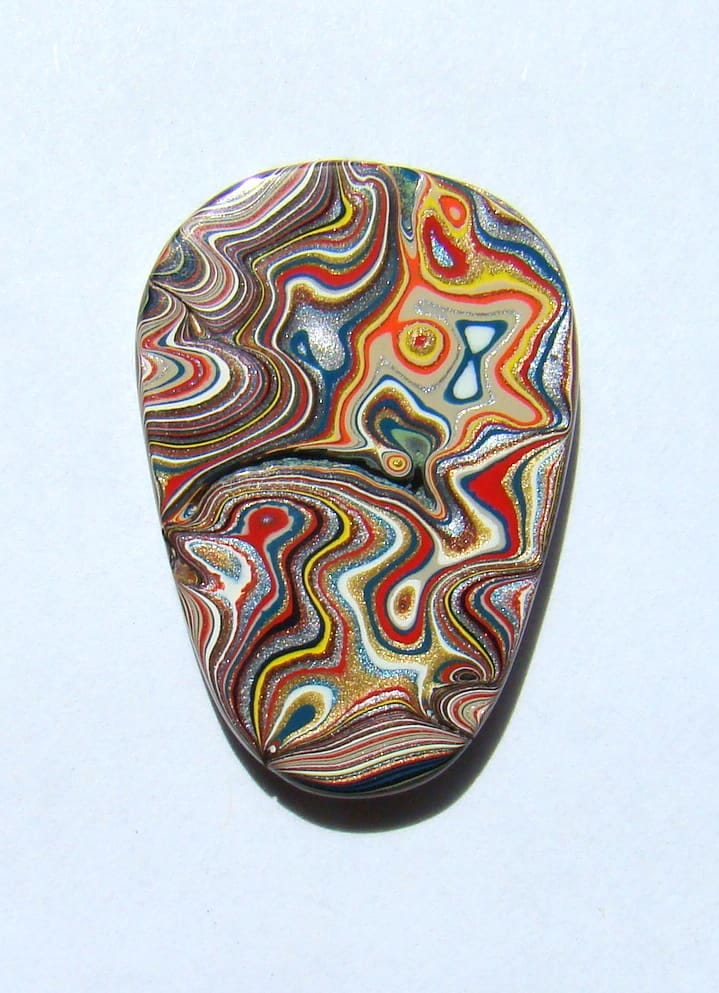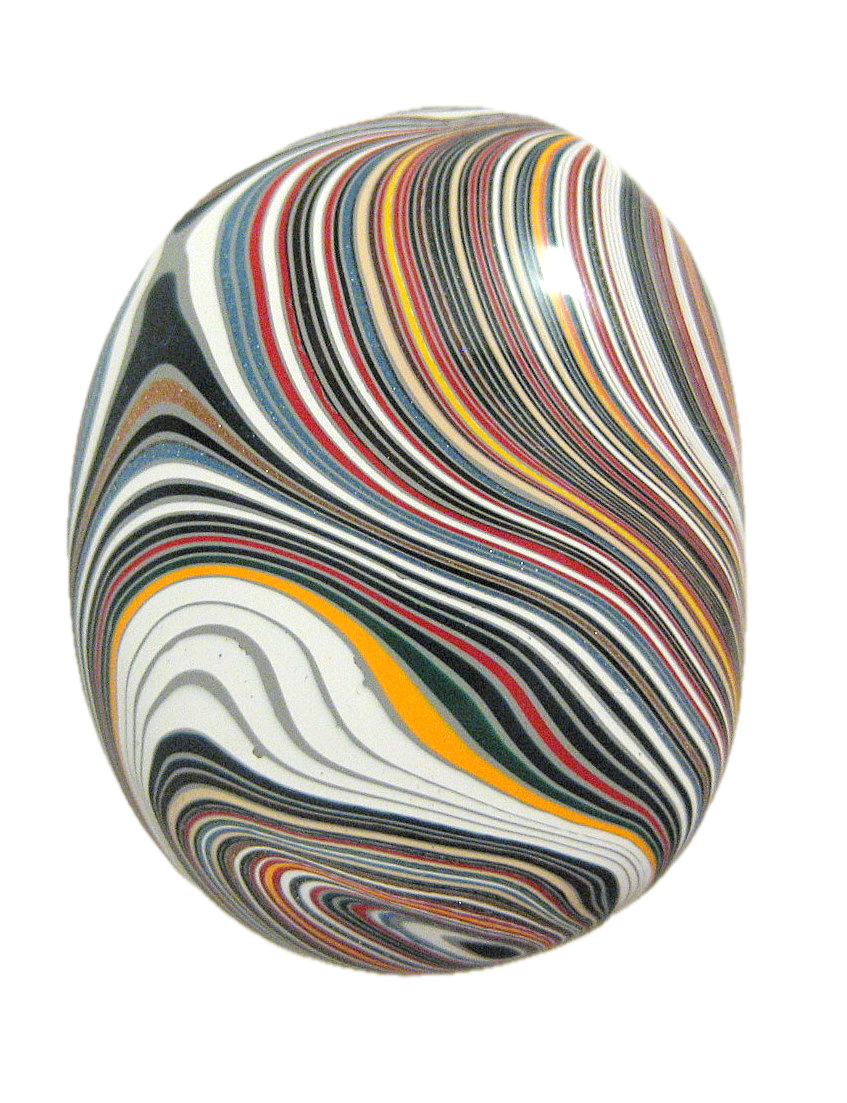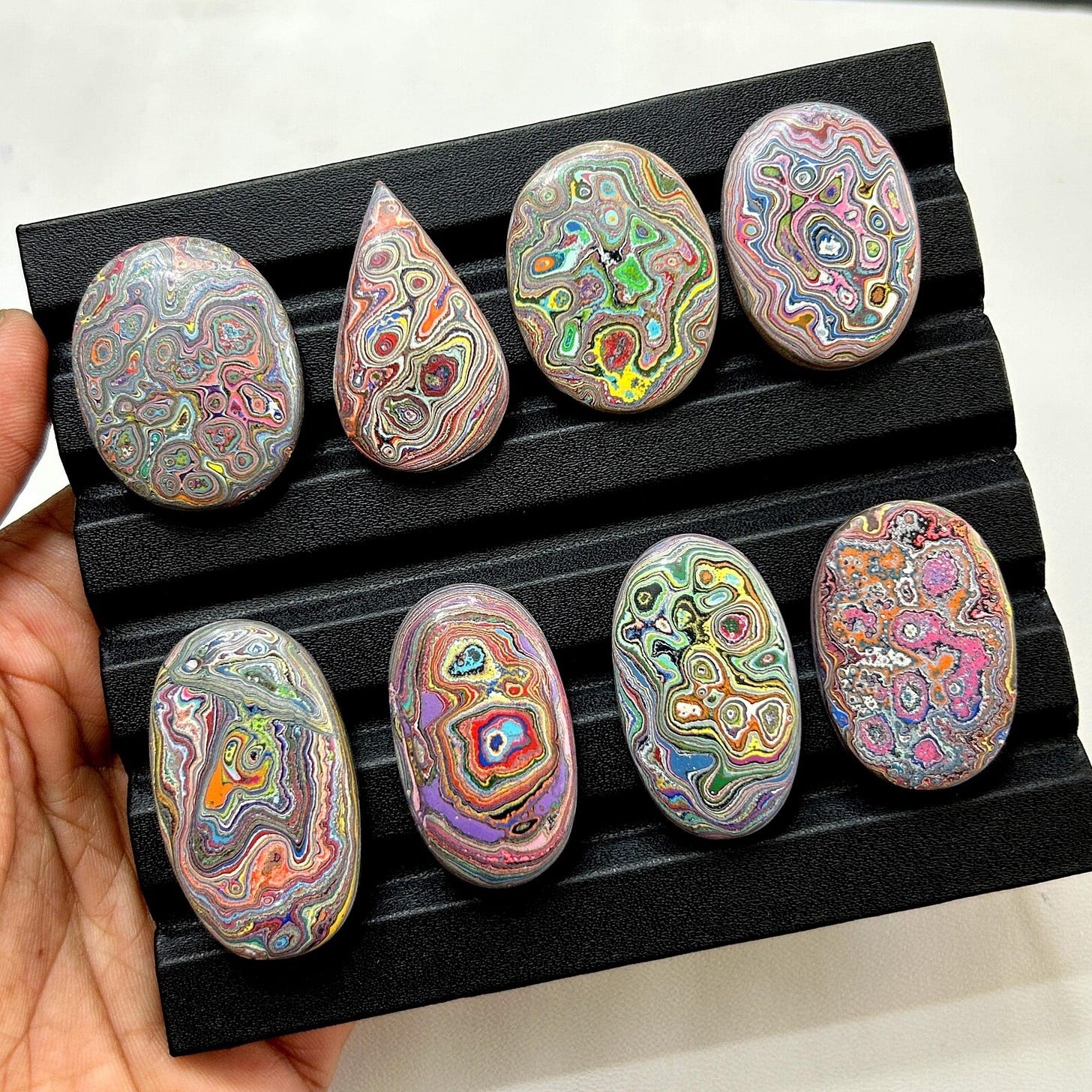Ryan McManus | September 4, 2025
The Fordite Edition
On geologic byproducts, American automotive lore, and the hidden beauty of the industrial age.
Ryan McManus (RMM) works in intelligence for Ford Motor Co. and is a longstanding friend of WITI. He has previously written about lost concept cars, treasure hunting Hot Wheels at his local grocery store, and lunch notes as meditative art. Cut him open to expose some beautiful layering.
Ryan here. Let’s be real for a second: gems are basically very pretty garbage. A byproduct of a geologic or biological process we hang on our bodies for some weird reason. Diamonds are just charcoal that has been squeezed a little longer than usual. Geodes are dried lava that got a little wet. Pearls? Oyster mucus, secreted to smooth out the bivalve equivalent of a stone in one’s shoe. They are unintentional, accidental and, due to the peculiarities of our brains, unquestionably beautiful.
So, if nature can accidentally create works of art while going about its business, why not us?
In the 1940s and 50s, Detroit’s automotive factories had a beautifully messy problem: paint. Workers hand-sprayed enamel paint onto cars on assembly lines, with excess overspray gradually building up on the tracks, skids, and walls of painting bays. This oversprayed paint accumulated over years, layer by layer—creating thick, multicolored deposits that factory workers would periodically chip away and discard.
What they were throwing out, however, would eventually become one of the most sought-after materials in contemporary jewelry making: Fordite, also known as Detroit agate.
Why is this interesting?
Fordite is a man-made gemstone (technically a non-faceted gemstone, called a cabochan), but not like the rubies and diamonds grown in labs. The material represents a fascinating intersection of industrial inefficiency and geological mimicry: As cars were spray painted by hand, the hardened enamel paint built up and baked, creating sedimentary-like layers that mirror how natural agates form over millennia, except compressed into decades of automotive production.
When cut and polished, the visual result is striking—especially in the most valuable samples from the late 1960s and early 1970s, the period of bright “high impact” colors like Ford’s Grabber Blue or Mopar’s Plum Crazy purple. Fordite reveals psychedelic swirls and bands that chronicle automotive color trends year by year, strata by strata: It’s essentially a cross-section of American car culture, with each stratum representing a different model year’s palette. Like the proverbial Jurassic Age mosquito trapped in the stone of amber, the DNA of a bygone epoch is hidden inside.
But Fordite’s deeper appeal lies in its accidental scarcity and temporal specificity. By the 1980s, car manufacturers had moved away from hand-spray painting, adopting an electrostatic process that magnetizes enamels to car bodies, leaving little to no overspray. Efficient, yes—but this electrostatic process ended Fordite production in abundance by the late 1970s. The material can never be recreated—it’s a finite byproduct of a particular moment in industrial history.
This creates a curious value proposition: Fordite is valuable precisely because modern manufacturing has become more efficient. It is industrial waste transformed into luxury material through the simple passage of time and technological progress. With the old factories long gone and today’s automated systems eliminating waste, each piece of Fordite becomes increasingly rare (and expensive), turning Detroit’s former inefficiency into today’s artisanal treasure.
In an age of planned obsolescence and disposable manufacturing, Fordite stands as an accidental monument to the beauty that emerges from industrial imperfection—proof that sometimes the most interesting materials come from processes we’ve intentionally left behind.
A better poet might even see Fordite as metaphor for the City of Detroit itself—forever tied to the automobile, often written off as worthless; unrecognized as a thing of curious quality and glorious beauty waiting for its moment. (RMM)
Still here? Enjoy some bonus video content of a Fordite stalagmite being cut:


